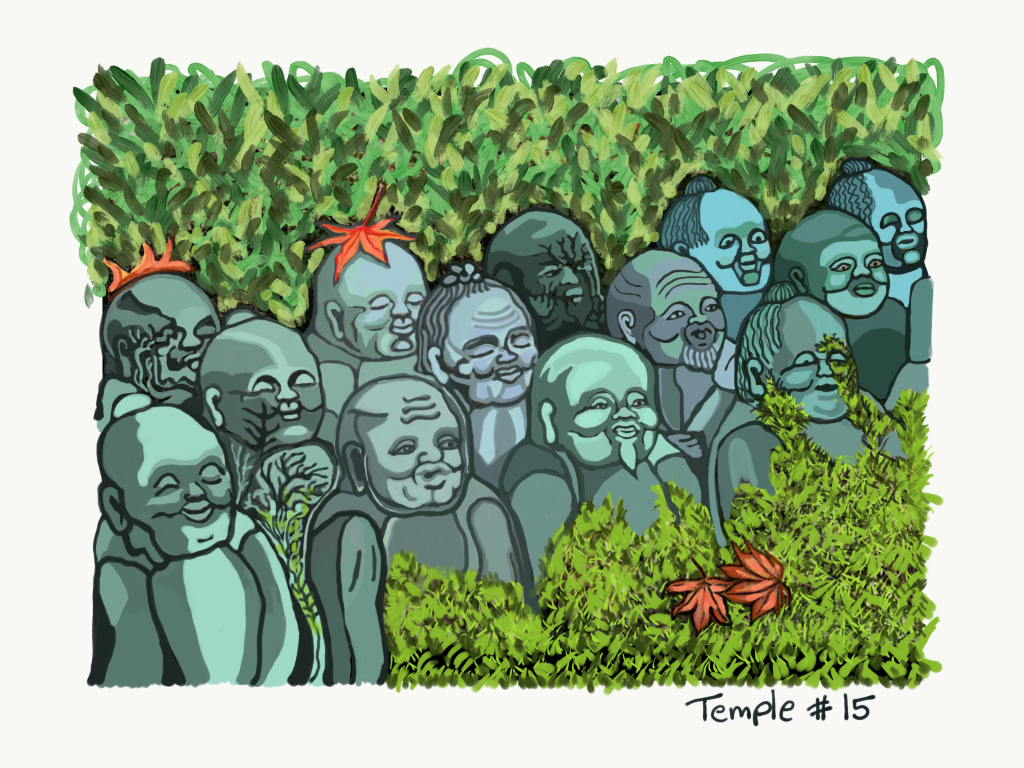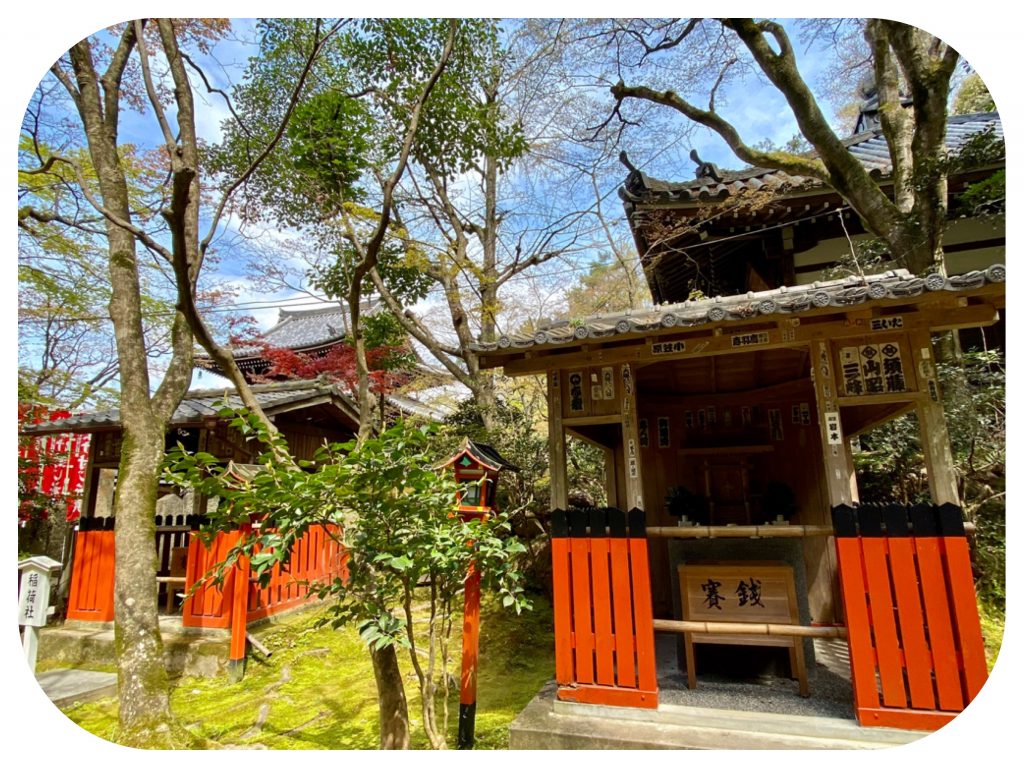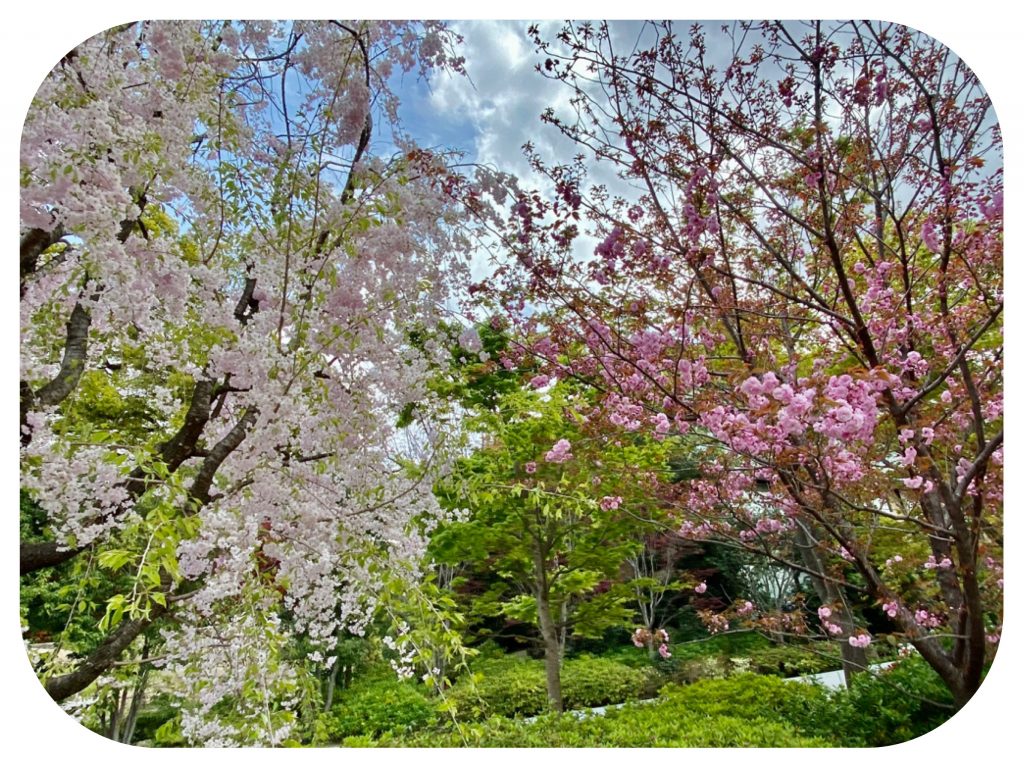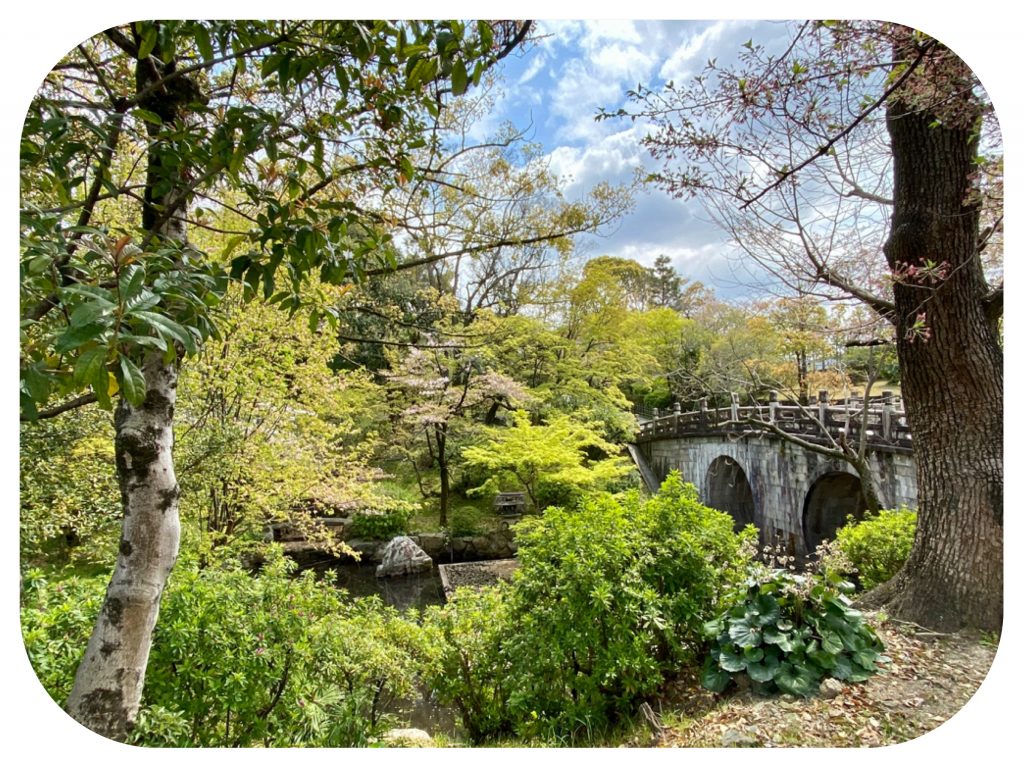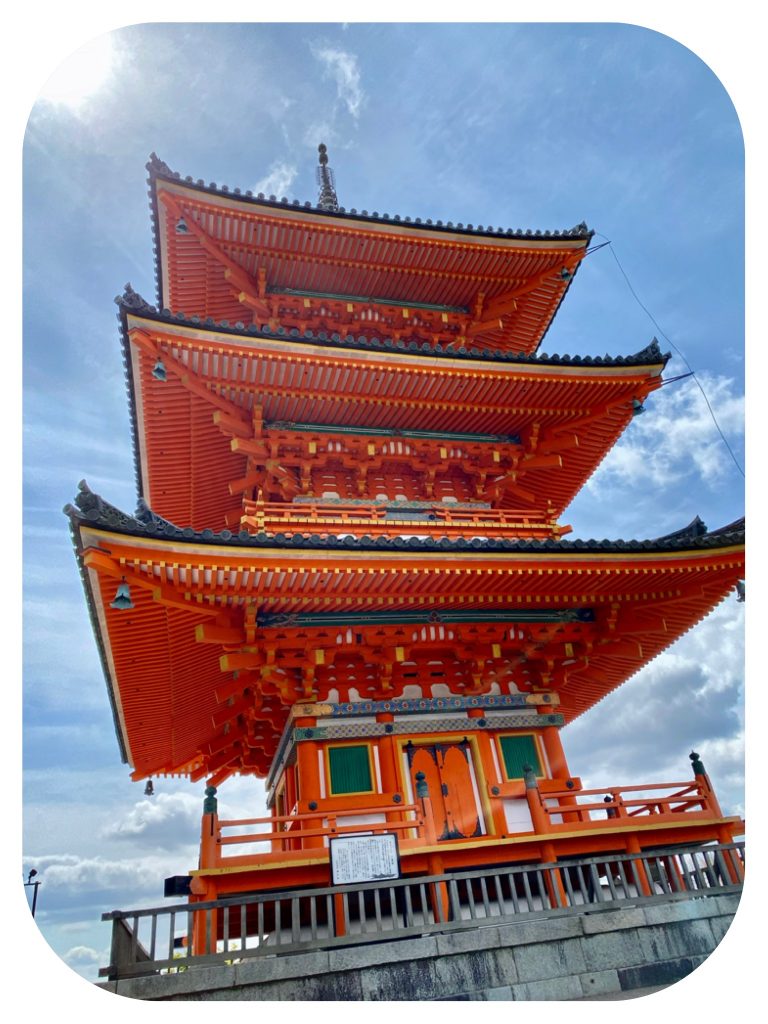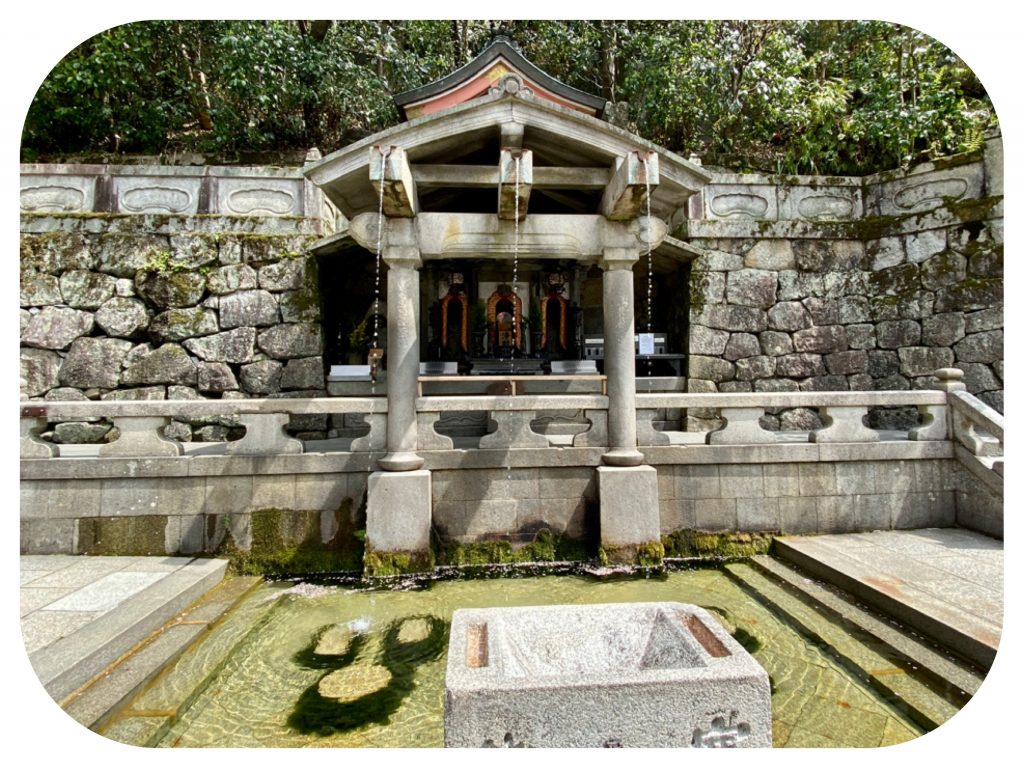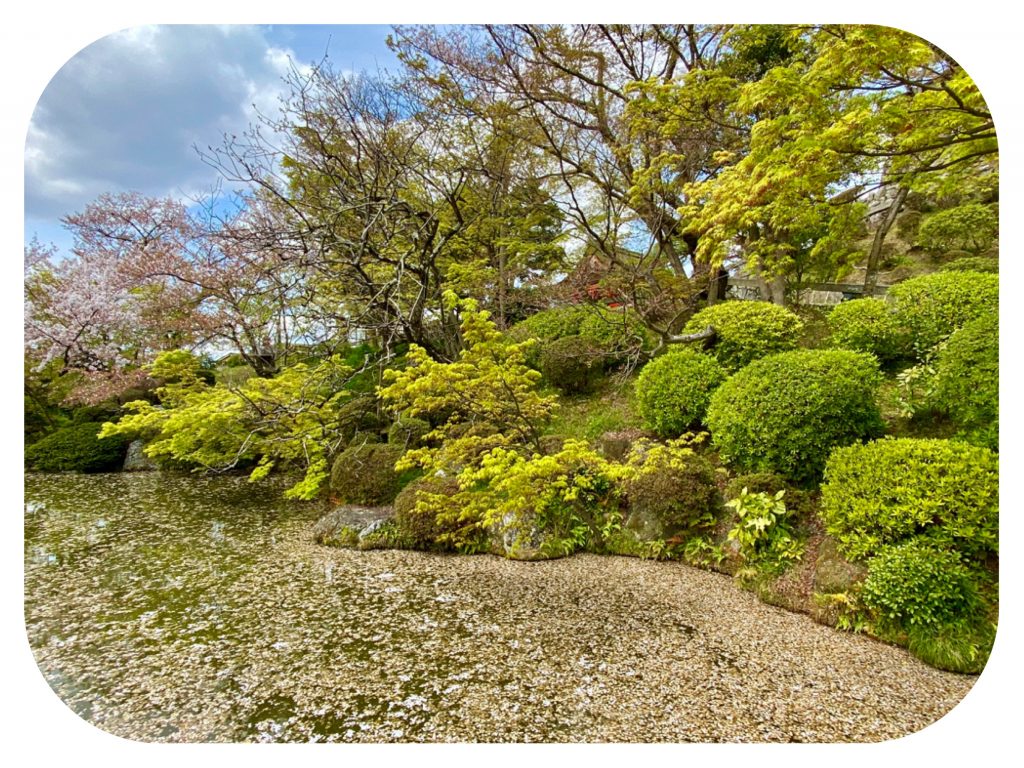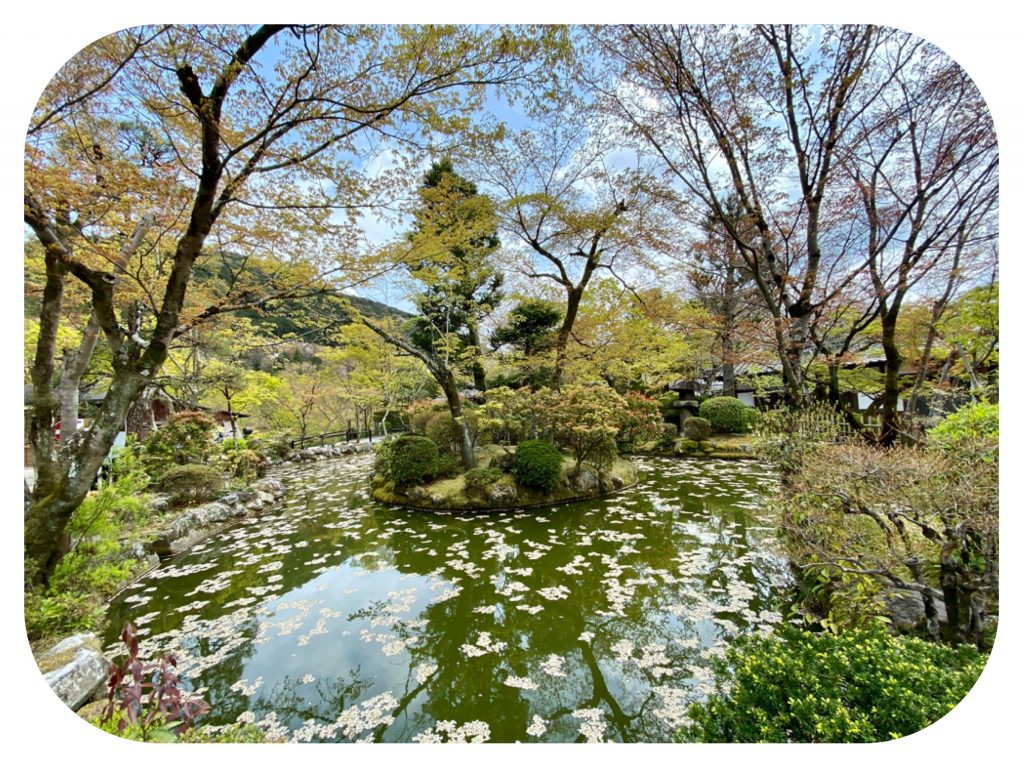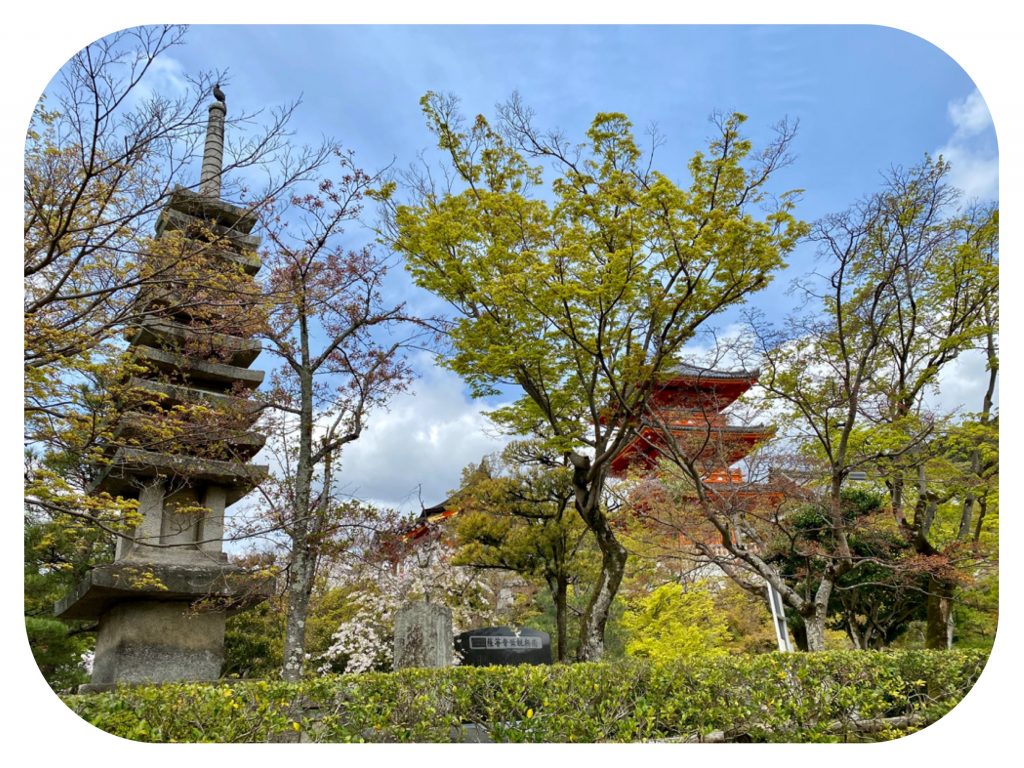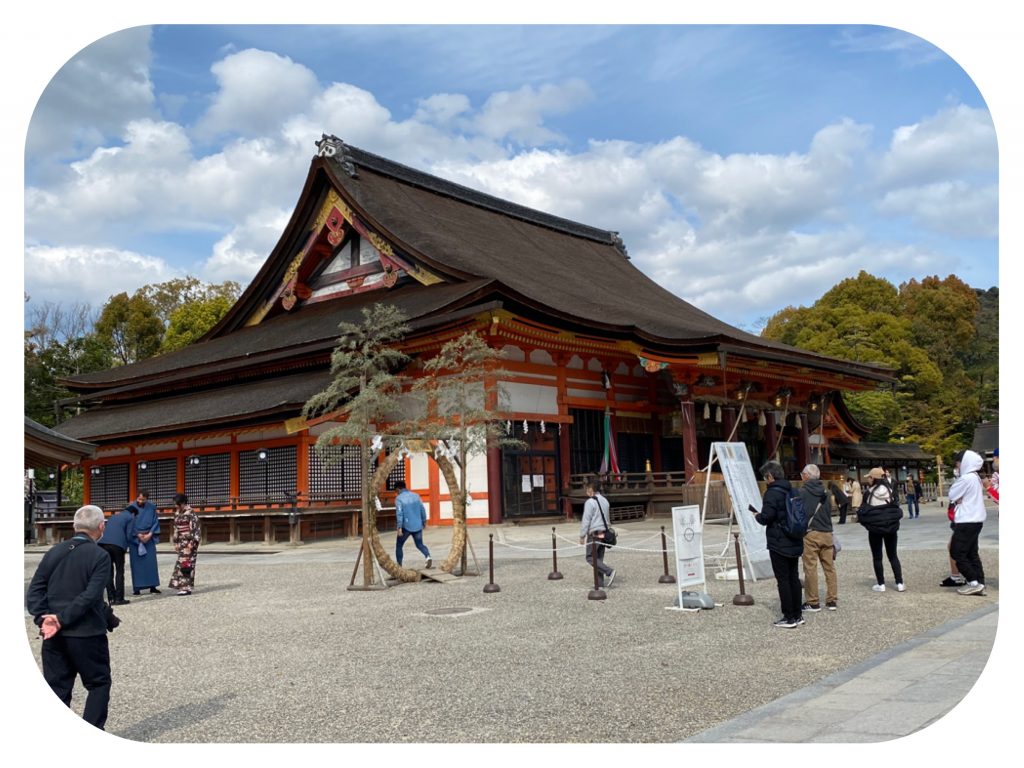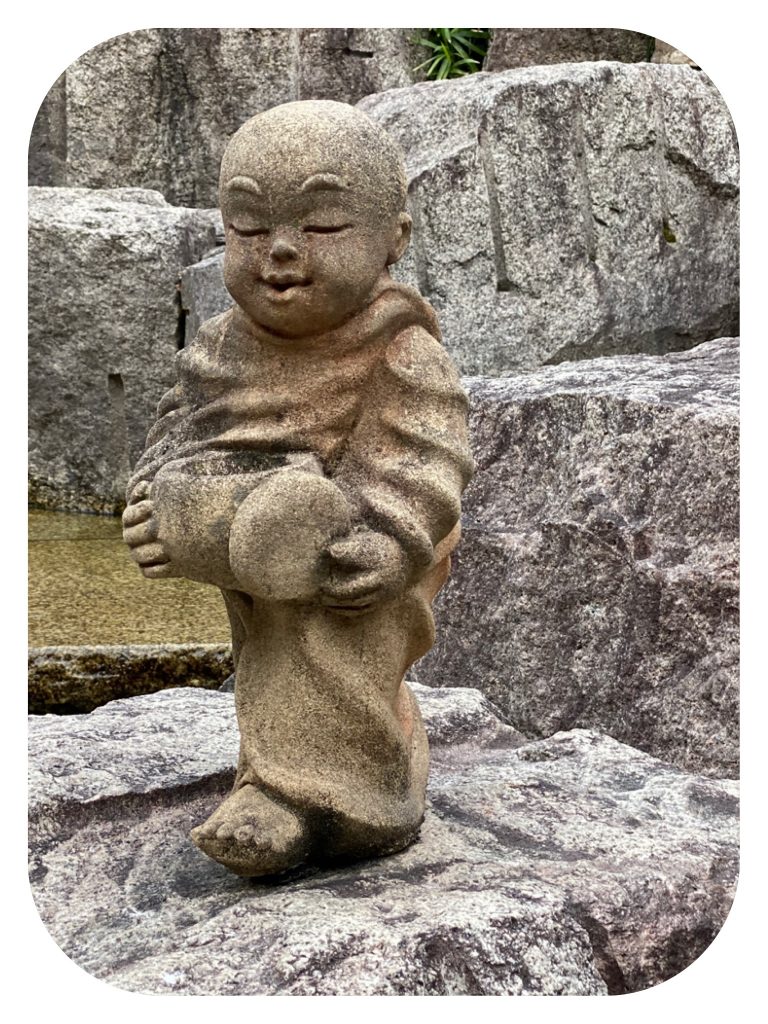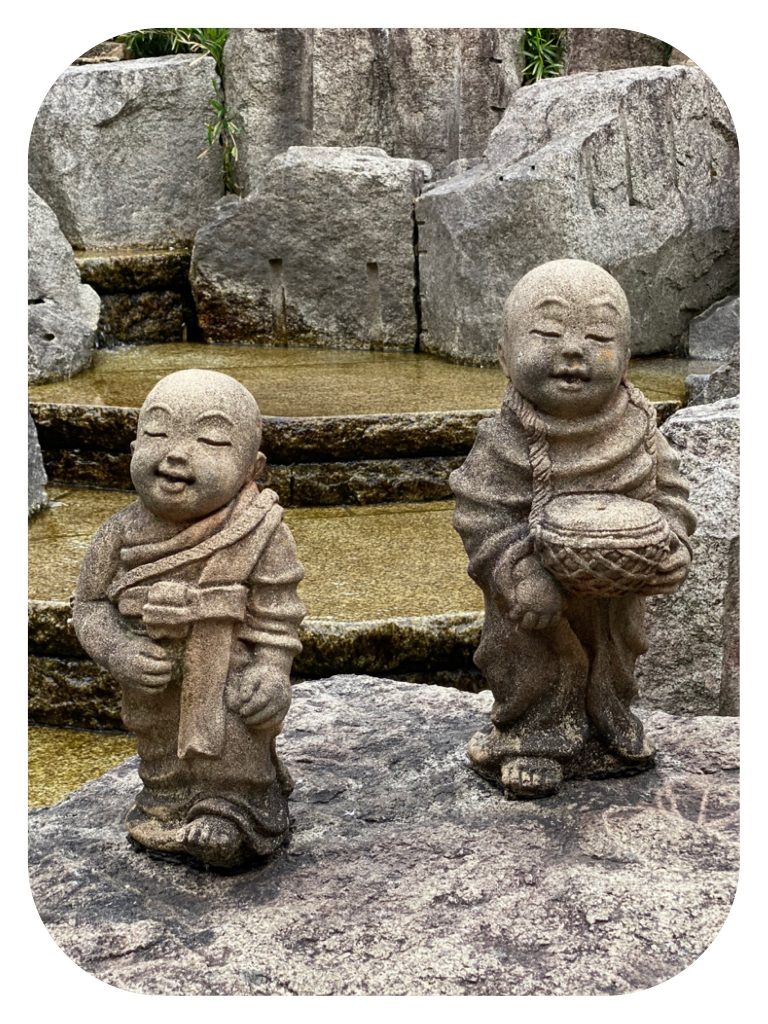Day 25 - The Road To Enlightenment - Walking The Saigoku Kannon Pilgrimage - Imakumano Kannonji Temple #15, Kiyomizudera Temple #16, Rokuharamitsuji Temple #17, Rokkakudo Ikenobo Temple #18, Gyoganji Kakudo Temple #19, and The Yasaka shrine in Kyoto

Day 25 - The Road To Enlightenment - Walking The Saigoku Kannon Pilgrimage - Imakumano Kannonji Temple #15, Kiyomizudera Temple #16, Rokuharamitsuji Temple #17,
Rokkakudo Ikenobo Temple #18,
Gyoganji Kakudo Temple #19, and The Yasaka shrine in Kyoto
Yesterday, Kyoto asked to be added to the government’s state of emergency prefectures, and it shook up our plans.
I cannot really say that we were too shaken by the news.
Every day we have been dealing with difficult situations, which require us to be adoptable and respond with light hearts to whatever comes.
We already decided that we cannot make this pilgrimage into a race of running around Japan to collect stamps.
That would reduce a holy journey for enlightenment into a bunny race for souvenirs, which we do not plan to do.
If we really want a book and scroll full of seals and stamps, we can buy one at the end of the pilgrimage.
It is sold on Rakuten (the Japanese Ebay) for those who want to enjoy the merits but cannot go on the actual pilgrimage.
But a part of us wants to visit and pray in front of the amazing Kannon and Buddha statues that have survived 1300 years in a world that seems to cause everything to decay so quickly.
So....we decided to take a full day to visit all of the central Kyoto temples, and assess what to do after today.
If the temples close, we will have to revise our itinerary.
We plan to do the walking to make up the distances between Nara and Uji, and then on to Kyoto, during the next week.
We took the train from Nara to Tofuku-ji temple, and walked from there to temple #15, Imakumano Kannon-ji.
Google maps did not show an accurate route, and we ended up on a dead-end road, and reversed ourselves to another route up the hills.
Imakumano Kannon-ji is located on a forested hillside, with beautiful maple and cherry trees.
It is known as the temple that cures headaches.
The origins of Imakumano Kannon-ji date back to the eighth century Heian Period.
According to the temple legend, one day while Kukai was practicing nearby, he saw an unusual group of purple clouds hovering over the mountains near here.
Feeling drawn to the clouds, Kukai came to see what was happening.
Under the clouds, he found an old man with white hair.
The old man told Kukai that he was the god of Kumano.
He gave Kukai a statue of Kannon Bosatsu insisted that Kukai protect this place.
Kukai did as the old man asked him and enshrined the Kannon statue in a small hut that later became Imakumano Kannon-ji.
One day the Emperor Goshirakawa had a splitting headache, and he went to Imakumano Kannon-ji to pray for a cure.
That night, Kannon appeared in his dream and shone a light on his head.
His migraine headaches completely vanished.
The monk at the temple was not super friendly.
He stamped our book and seemed a bit short tempered.
We paid him no mind, but after he heard our Heart Sutra chant, he smiled at us warmly, gave us two thumbs up and said in English, “Awesome!”
It was a pleasant walk from there to Kiyomizu-dera Temple.
The mountain is home to wild boars and monkeys, but we saw none.
We only saw signs asking people not to feed the monkeys.
Kiyomizu-dera is perhaps the most touristy temple in Kyoto.
It is situated up a hill, and it is so very scenic and beautiful.
Even twenty years ago, when we first visited, it was full of people and tourists.
Only then, most of the tourists were Japanese.
Today, there were many fewer people around.
But it was open, and our hearts rejoiced.
By now we visited both a small mountain temple in Kyoto and now a big busy temple in Kyoto, and both were open.
This meant that the rest of our temples in Kyoto would be open as well.
The streets leading to Kiyomizu-dera are usually bustling with tourists and shops offering kimono rentals, and selling sweets, food and souvenirs.
Signs ask tourists not to pose in front of the Main Temple Gate, because when thousands of people pose there daily, it blocks the traffic flow in the streets.
Today the signs seemed redundant and unnecessary.
The streets were enjoyable to walk through, and no crowds posed in front of the gate.
In the main hall of Kiyomizudera, I got so many compliments on the Kannon Goddess I had painted in the middle of our scroll, that the staff gathered to look at my scroll.
After visiting the temple and praying for healing of the world, we had a hot tofu dish and a hot kitsune soba in the temple’s restaurant, the same one that we had eaten at 20 years ago.
They offered for us to sit outside, on the charming day beds, but we told them we were too cold.
In moments, they closed the doors of the indoor seating area and turned on the heater for us.
The hot tofu dish came in a wooden bucket, and the tofu cubes were swimming in steaming hot water.
We got a small strainer to fish out the tofu cubes and a hot broth with chopped scallions to sprinkle on top.
It was so delicious....
The waiter told us that we were their only customers today.
They were hoping that since it was the weekend, that there would be more visitors.
I tried to reassure them that maybe more people would come later.
He nodded his head and said: “Maybe.... but I do not think so.”
I told them that we had eaten in the same restaurant twenty years ago, and they told me that the restaurant has existed here for 130 years, serving the exact same food.
Kiyomizu-dera was founded in 778 by the Shogun general Sakanoue no Tamuramaro.
The present buildings were constructed in 1633, without the use of one single nail in the entire structure.
It is named after a waterfall within the complex, which is fed by the runoff from the nearby hills. Kiyomizu means “clear water,” or “pure water. “
It was originally affiliated with the old and influential Hossō sect dating from Nara times.
However, in 1965 it severed that affiliation, and its present custodians call themselves members of the "Kitahossō" sect.
The main hall has a massive and sloping wooden veranda, supported by tall pillars, that juts out over the hillside and offers impressive views of the flowering trees, and beyond them, the city.
Large, sloping verandas and main halls were constructed at many popular sites during the Edo period, to accommodate large numbers of pilgrims.
The sloping is to let the rain run away from the main halls, into the forest and gardens below.
There is a popular old Japanese expression to “Jump off the stage at Kiyomizu," and it is the Japanese equivalent of the expression "to take the plunge."
This refers to an Edo period tradition that held that if one were to survive the 13-meter (43-foot) jump from the veranda, one's heart wishes would be granted.
During the Edo period, 234 people jumped and the records say that 86 percent of those who had jumped, actually survived.
The practice was finally prohibited in the year 1872.
The temple complex includes several other shrines, among them a shrine dedicated to the god of love and "good matches."
Couples climb up the stairs to ask for blessings.
The shrine has a pair of "love stones" placed 18 meters (60 feet) apart, which lonely visitors try to walk between with their eyes closed.
Success in reaching the other stone with their eyes closed, implies that the pilgrim will find true love.
Jules and I did it twenty years ago, and we are still together and in love (most all of the time.)
From there, we walked into central Kyoto towards Yasaka shrine.
The coronavirus outbreak prompted the Yasaka shrine to break from a centuries-old tradition, by setting up two large grass hoops that are usually erected only during festival time, in order to fend off the coronavirus plague.
The Yasaka Shrine set up these two grass hoops, called Chinowa, for
the first time since the year 1877, that a Chinowa has been erected outside of festival dates.
At that time, Japan was hit by a cholera outbreak.
Visitors walk through the hoops to pray for a quick end to the coronavirus pandemic.
There was no line of people waiting to walk through the Chinowa and so we walked through them in an infinity figure-eight shape, entering and circling as instructed, while the press took our photos.
Temple #17, Rokuharamitsuji, was first founded by Kuya Shonin (also Kuya Jonin) in 951.
Back in those days, Kyoto was in the midst of a plague, and Kuya had carved an 11-faced Kannon that he pulled around the city on a decorated float, to rid the city of the plague.
While doing this, he served the sick people a special tea that he had concocted from pickled ume plums and tied-up seaweed.
He brewed the tea over burning bamboo, splayed out to look like a lotus blossom.
This special tea was said to have cured the people of the plague.
The treasure hall at the temple houses a standing statue of Kuya Jonin, a statue of Kiyomori Taira as a monk, two statues of Jizo Bosatsu, and statues of Yakushi Nyorai and the Shitenno (the Four Heavenly Kings).
Rokuharamitsuji is a Shingon Buddhist temple of the Chisan sect.
In the Heian period, a large number of mansions and military headquarters were built, and over 5000 people lived here.
The main hall has been through many disasters, but the current main hall has been here since 1363.
One of the temple’s most famous treasures is a wooden statue of Kuya Shonin, with six buddhas emerging from his mouth.
It is said that while Kuya chanted the name of Buddha, six Amida buddhas appeared from his mouth, and so on the statue there are six tiny Amidas emerging from his mouth.
Each one represents a different "Namuamidabutsu" (a sacred chant of faith in the Amitabha). The statue was so lifelike and masterfully created.
There was also a statue of the eleven-faced goddess of mercy Kannon that Kuya himself had made.
The priests in this temple have a tradition of chanting sutras and dancing, which is said to ward off sickness.
They do this dance starting from December 13th until the end of the year, thirty minutes after the sun begins to set.
There is also a tea ceremony held from January 1st-3rd, based on the ancient legend of healing people by serving them tea.
I was so touched by the statue of the humbly dressed Kuya, who used to roam the streets of the city while it was being ravished by the plague, banging on his gong and offering the sick his healing tea, that I painted his statue while we were home in Colorado.
I showed the photo of Kuya that I had painted to the monk at Rokuharamitsuji temple, who was watching the hall where the statues were kept.
Photography was strictly prohibited.
He looked at my phone where I kept a photo of the painting I did and said to me:
“You are God! You are God!”
I knew he meant to say, “You are good!”
But I took it as an affirmation of my eternal Nature, and said: “Thank you, you are God, too.”
Before visiting temple #19, we stopped for soy mochas at a cool cafe.
Only after we had sat down, did I realize that we had been there before.
It is amazing how we are drawn to the same places across time and space....
The girl was friendly, her coffee great and her hojicha tea muffins were divine.
From there, we walked to Gyogan-ji Kokudo Temple.
The name Kokudo means “The Leather Temple.”
This unusual nickname came from the Heian Period.
Once upon a time, a hunter named Gyogen shot an arrow at a deer.
At the moment of death, the deer gave birth to a fawn she was carrying in her womb.
Gyogen immediately regretted killing the deer.
Overcome by guilt and grief, Gyogen decided to become a monk.
He tore off a part of the deer’s hide, tanned it into leather and wrote on it a sutra chant.
He always kept it near him, as a reminder not to stray from the path, earning himself the nickname, “The leather monk.”
Originally the temple was located near Ichijo (near Seimei Shrine), but after burning down numerous times, it was moved to its current location in the early 18th century.
While it was unpopular after WWII, a nun revived this temple, making it the only convent among the temples of the Saigoku Pilgrimage.
A very prolific nun stamped our book and scroll, and continued on to stamp quickly and efficiently the books and scrolls of about a dozen other people, all holding similar Saigoku pilgrimage books and scrolls.
The hondo enshrines a thousand armed statue of Senju Kannon that Gyogen made hoping to help everybody seeking enlightenment, to enter nirvana.
He made the statue out of wood from a tree in Kamigamo Shrine.
The statue is only open for the public to view on January 17th and 18th of every year.
There is another interesting legend about this temple.
Once upon a time, there was a girl name Ofumi.
Ofumi was a servant girl who often played with her master’s son on the temple’s grounds.
Because they often played together in the temple, the boy eventually memorized the monks’ chants by overhearing them repeatedly.
One day, the boy recited one of those chants in front of his father at home.
Since their family practiced a different school of Buddhism from the monks of Kodo, the father flew into a fit of rage.
In his anger, he killed Ofumi and hid the girl’s body in the temple.
Later, Ofumi’s mother and father dreamt that their daughter visited them in a dream.
Their daughter told them what had happened, and asked them to donate an Ema with her hand mirror to Kodo.
The ema is still kept in the temple and is open to the public only on August 22nd to 24th of every year.
From there, we walked quickly to Rokkaku-dō (六角堂, Rokkaku-dō), official name Chōhō-ji (頂法寺, Chōhō-ji),
It was already after four in the afternoon, and the temples close at five.
Rokkaku-dō is believed to have been established in the early Heian period.
The temple is the place where traditional Japanese flower arrangement , called Ikebana, or Ikenobō, had originated.
According to legend, when Prince Shōtoku was a child, he found a small Chinese chest that had floated to the shores.
Opening the lid, the prince found a small gold image about 5.5 cm of Nyorin Kannon.
He kept it as a sacred Buddhist amulet.
He prayed to the Kannon to bring him success, promising the Goddess Kannon that he would build a temple in Osaka, if he were to become successful.
In 587, Prince Shotoku decided to build the great temple of Shitennoi-Ji in Osaka.
Searching for building materials, the prince journeyed out of Osaka into the woods.
It was a hot day and the prince stopped by a pond to cool down.
He took off his clothes and his precious amulet in order to bathe in the pond.
He placed his clothes and the Nyoirin Kannon amulet on a nearby tree.
After his swim, he went to put on his clothes and put the Nyoirin Kannon back in his pocket.
Suddenly the tiny Kannon became too heavy to pick up and the prince was unable to lift it.
The prince decided to spend the night there and await the morning.
During the night he dreamed that Nyoirin Kannon appeared to him saying, “With this amulet I have given you, I have protected many generations, but now I wish to remain in this place.
You must build a six sided temple and enshrine me within this temple.
Many people will come here and be healed.”
So Prince Shotoku built the temple and enshrined Nyoirin Kannon within it.
In 1204, when he was 29 years old, Shinran Shonin (1173 - 1263) decided to spend 100 days in seclusion and privacy at Rokkakudo Temple.
On the 95th day, Kannon appeared to Shinran in a dream and told him to forgo his vow of celibacy and to marry.
She told him that she would appear to him in the form of a woman and they would become lovers and enter into Amida’s Paradise.
She then told him that he should seek out the monk Honen, who will become his teacher, and that he will start a new order of Buddhism that encouraged clerical marriage and family life.
Shinran did as she asked and became Hōnen's disciple, establishing the Pure Land Buddhism (Jōdo Shinshū) tradition in Japan.
A small hexagonal hall at Rokkakudo temple features two statues of Shinran – one seated in a dream trance and the other standing with a walking staff and prayer beads.
It was five o’clock and the temples were now closed.
We stepped right from the temples into a Starbucks cafe.
We stayed there drinking teas and resting until dinner.
Many restaurants close early now, but we were able to order and eat in a lovely vegan cafe, that also had a health food shop and a cool clothing boutique.
It was nice to have a big salad and pumpkin soup.
Then we took the hour long train back to our hotel in Nara.
Being the weekend, our hotel was bustling with people, many of whom were eating at the free noodle cafe close to the lobby.
We bathed at the hot springs, and I put our laundry in the washing machine, while I bathed.
We had to admit we had a fabulous day.
It was busy and full, but still a most enjoyable day.
With love and light,
Tali and Jules
Daily stats:
Steps walked - 29,983
22 km. walked
Active walking time - 5.5 hours
Total walking time today - 7 hours.
Total walking distance on the Saigoku to date - 494 km
Temple Visited:
Temple #15 Imakumano Kannonji in Kyoto
Temple #16 Kiyomizudera in Kyoto
Temple#17 Rokuharamitsuji in Kyoto
Temple #18 Rokkakudo Ikenobo in Kyoto
Temple #19 Gyoganji Kakudo in Kyoto
The Kyoto Yasaka shrine.





